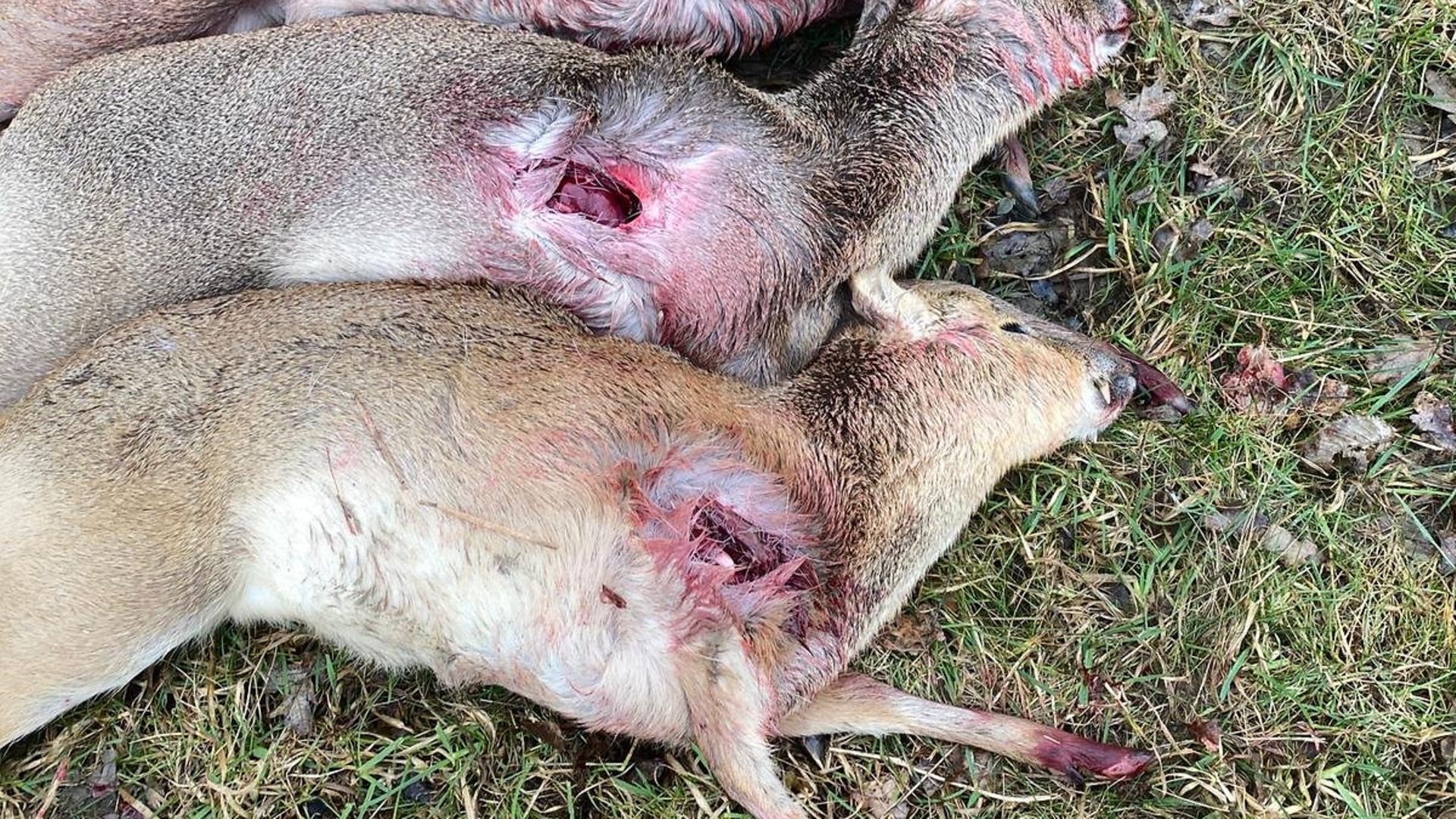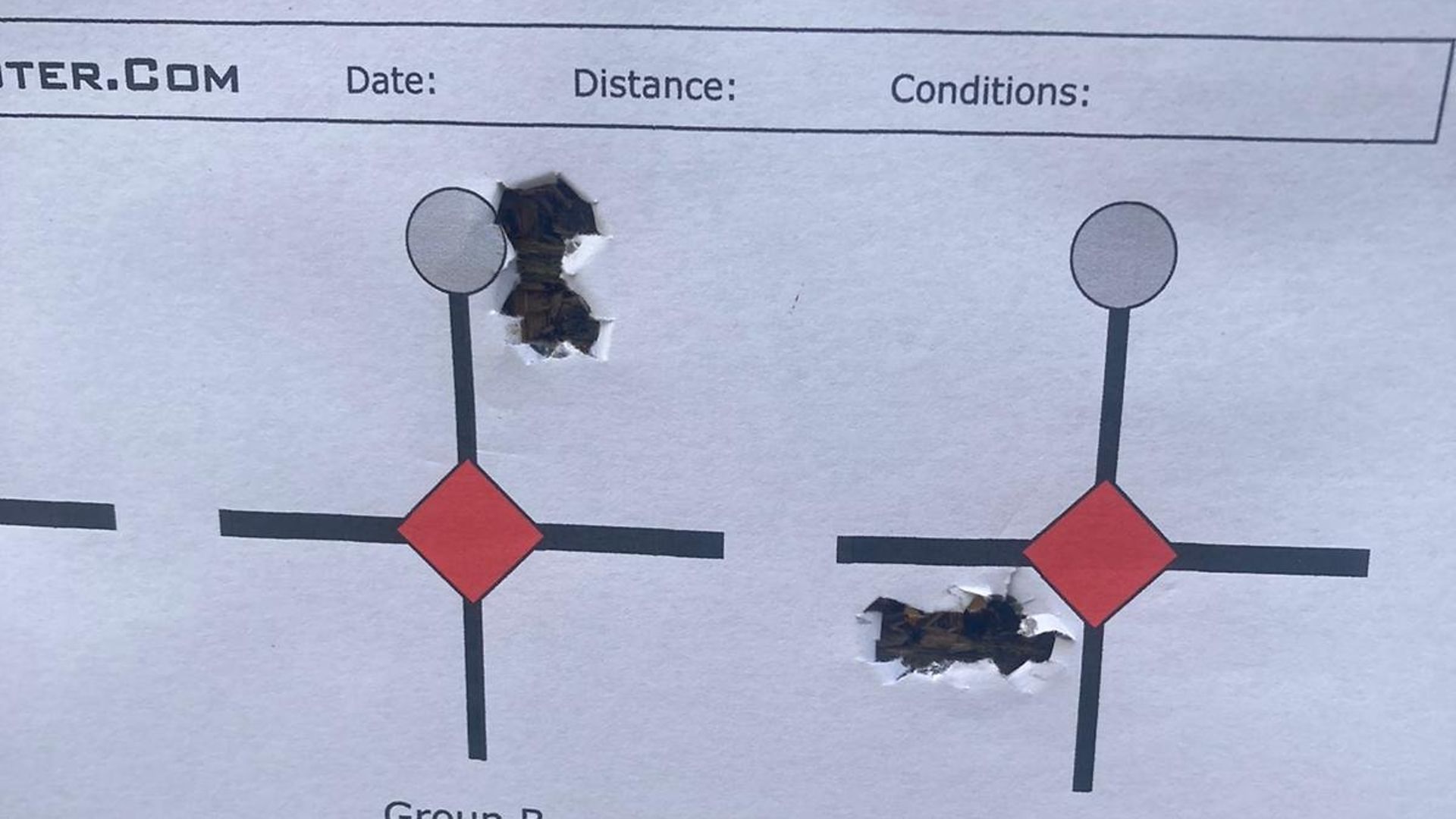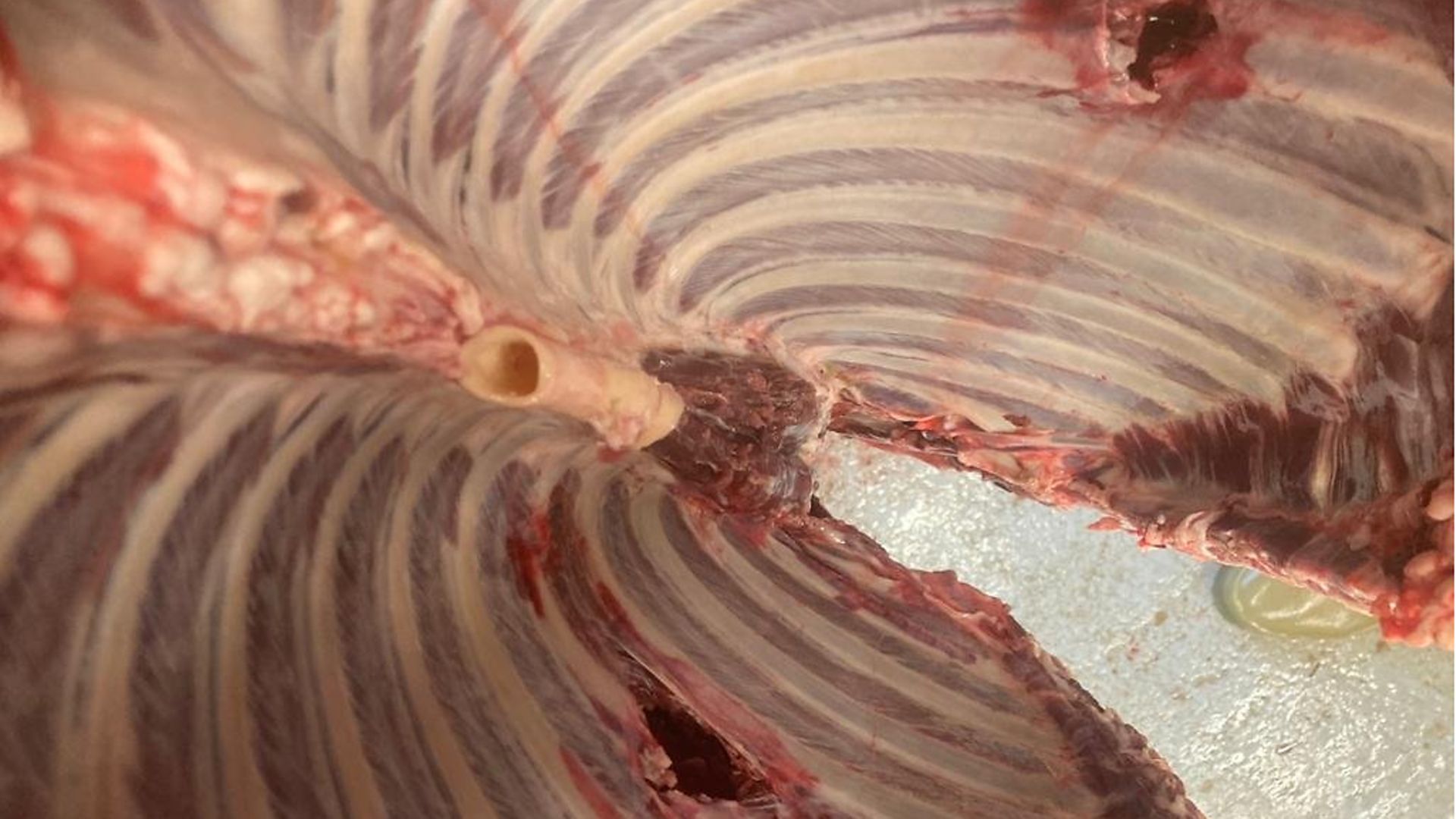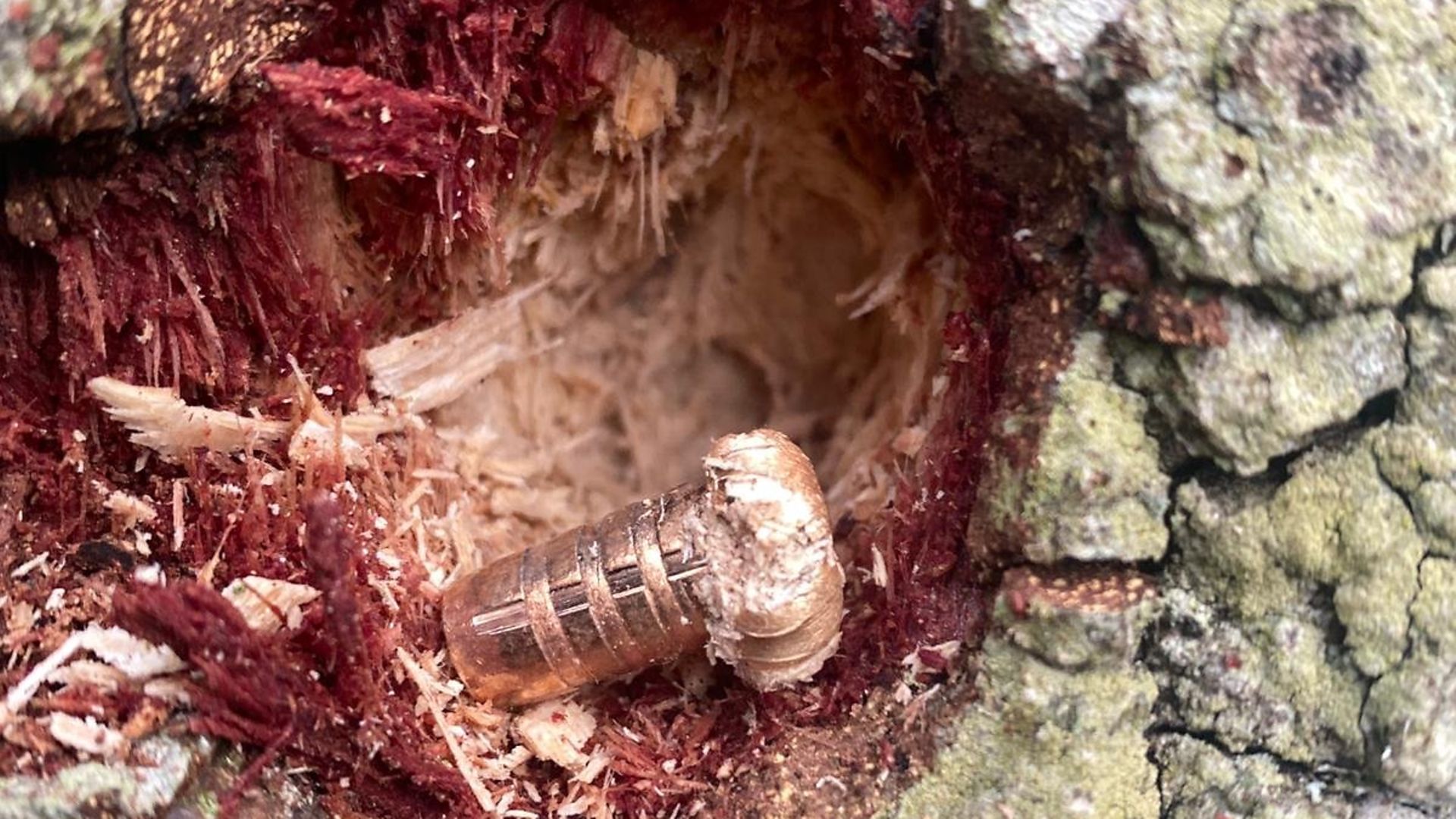Tim Pilbeam has been on a real mission to discover the impact of lead-free ammo on stalkers. Here are his findings in full...
Are you still unsure about using lead-free ammunition for deer stalking? Do I hear a sigh? Are you fed up with the topic, as if it is being rammed down our throats? To be honest, I cannot blame you for feeling this way, but once you have read this article, I hope it will put a few concerns aside, giving you the confidence to go to the dark ‘eco’ side!
If there is anything that compromises our wonderfully natural produce, it needs to be addressed, and that’s where deer stalkers in the UK are at the moment with regards to the use of lead ammunition. If the meat cannot be sold, there is little or no value to it, and this will have a detrimental effect on our countryside. This sustainable food helps pay for the management, welfare and conservation of our wildlife. No management, and the deer population will explode, if it hasn’t already.
 credit: Archant
credit: Archant
BACKGROUND
Why are hunters changing to lead-free ammo?
Research on the toxicity of lead may not be 100% convincing, especially for humans, but raptors are killed by ingesting a tiny piece of lead (and that is a fact). There is a ‘worry’ that lead could affect the cognitive behaviour of young infants, not forgetting the concerns of it affecting pregnant women, so surely it begs the question: if there is an alternative that could be as effective, why would you not use it?
Many of the leading game dealers will not be accepting lead shot game in the very near future, if not already. I understand that one major game dealer is implementing this imminently. Local butcheries will follow suit. Scream and protest as loud as you can, BUT this is one battle you will not win. I think that most stalkers and hunters accept this, but just need some reassurance and guidance on the lead-free alternatives. If my study can achieve that, with the help of Fieldsports Britain, I would have done my job.
I am doing the hard work for you. Sit in your comfy armchair with your tipple of choice, study the evidence and data that I present to you and, if nothing else, learn from your fellow stalkers who took part in my study. Speaking of which, I had 15 experienced stalkers, a few taking 20 deer a year and others 200.They were an open-minded bunch with only two having used lead-free ammunition before. Over a period of 5 months, they sent me data on their kills and thoughts on how the lead alternatives work. None have been sponsored or have any lead-free agenda.
The mantra for all hunters and stalkers is perhaps ensuring that population numbers of wild animals are managed as humanely and as ethically as possible. The aim of this project is to see if there is a creditable alternative to a bullet with lead in it. Are they as effective at dispatching these animals? Surely, that’s all a deer stalker wants to know? Basically, in three words, do they work?
Why are hunters concerned about switching to lead-free ammo?
Let’s revisit the perceived problems and concerns in the field with lead alternatives, predominantly copper, gained from research and feedback from Facebook posts:
- Lack of consistent expansion using different bullets, affecting the most humane dispatch and knock down
- Animals running off after shot due to ‘pencilling or passing through’ using monolithic bullets
- Lack of fragmentation
- Lack of expansion at longer ranges
- Accuracy issues and thereafter consistency, compared to lead
- Greater ricochet risk
So, with those concerns in mind, my study was going to have to answer these questions. Using a WhatsApp group, they reported back to me with the following data:
- Species of animal
- Range or shot distance
- Shot reaction
- Bullet placement
- Run on or flight distance post shot
- Any comments or observations comparing shots to using their everyday lead bullet, including photographic evidence.
 credit: Archant
credit: Archant
THE STUDY
Let’s cut to the chase and review what we have achieved since the start of the study.
Participants, calibres and animals taken:
- 15 deer stalkers, from the north of Scotland to Sunny Sussex, taking red deer, fallow, roe, muntjac and CWDs (oh and a few foxes).
- Some shoot 10 – 20 a year, a few between 30 and 100, and some over 200 a year, with 3 owning their own butcheries. The perfect cross-section of stalkers.
- 6 of the most common deer stalking calibres tested: .243, .270, 6.5 Creedmoor, 6.5x55, .308, .30-06
- Over 325 deer were taken during this project to the end of April 2021 (data changing weekly)
- Over 20 different bullet/ammunition combinations from 7 of the leading manufacturers (numbers of animals shot in brackets in bullet points below).
Lead-free ammunition brands used:
Barnes
- LRX 6.5 Creedmoor 127g (x11)
- TTSX - 150g .30-06 (x25); .6.5x55 120g (x10); .308 130g (x7); .270 130g (x60)
- .22 250 50g (x14) (fox)
- Barnes home loads .6.5x55 120g (x2)
Federal
- Power Shok Copper .243 85g (x6)
Geco Zero
- .30 06 136g (x15)
- .308 136g (x3)
Hornady GMX
- .308 165g (x2)
- .270 130g (x6)
- .6.5x55 (x6)
RWS
- Evo Green 6.5 Creedmoor 93g (x26)
Sako
- Powerhead 2 .6.5x55 120g (x20); .270 110g (x50)
- PH Blade .308 162g (x25); .30-06 170g (x6)
Sellier and Bellot
- Exergy Blue .6.5cr 120g (x5); .30-06 165g (x42)
- XRG 270g (x3); .308 180 (x2)
Lapua Naturalis
- .30-06 170g (x2)
- .243 90g (x2)
Of the deer taken, so far:
- 170 have been head or neck shot
- most importantly for this test, over 165 have been shot through the body
- 24 foxes were also taken
This project needs putting into prospective. While it feels like my band of stalkers are the pioneers, the guinea pigs who are at the cutting edge of something new and innovative, I was informed that a senior manager for Forestry England confirmed that his wildlife rangers have shot over 12,500 deer A YEAR and have been using lead-free ammunition for the past 6-7 years!
One ranger quoted: “How could we put a healthier product into the food chain from work than the food we put on our own families’ plates? We now want lead-free meat at home – obviously!!”
So, what is all the fuss about! Lead-free ammunition has been used for many years, with Barnes being the most foremost manufacturer and developer of copper bullets for over 20 years, but what do the stalkers say and what does the data prove?
They all work and put deer on the ground! I cannot argue with the data! Other than one roe deer, none of these beasts were lost.
 credit: Archant
credit: Archant
RESULTS
Feedback from the hunters:
- The average flight or run off distance for body-shot deer was 18m (head and neck shots excluded from this calculation)
- Despite the variety of ammunition (bullet weight and construction), after 4 months, stalkers could not witness any major differences in shot reaction or run off distances compared to their everyday lead ammunition
- Lead-free ammunition is accurate, but as with lead, finding the right ammunition to suite your rifle will be harder, as there is little choice out there at the moment, with most manufacturers only making one weight of bullet for each calibre
There are two distinctive designs of bullet on this test - the mono metal copper and the fragmenting bullet.
Feedback on the bullets' behaviour, e.g. expansion and ricochet:
- The copper bullets make a narrower wound channel with deeper penetration compared to a lead bullet that is designed for the lighter antelope.
- The fragmenting food grade tin bullet (e.g. Geko Zero and RWS Evo Green) is designed in such a way that the front half explodes, causing huge trauma and in some cases extensive meat damage, with the rear half driving through to ensure effective penetration.
- No ‘pencilling’ was witnessed. In my humble opinion, the term ‘pencilling’ is used when an animals is shot, showing no shot reaction, therefore running off showing little or no affect from the bullet impact.
- Shot reaction can be different to a lead bullet that is designed to shed 25 – 50% of its weight into the carcass. The reaction from copper bullets may not be as violent or explosive, but the energy has been dumped, with the animal on occasions standing a few seconds or moving a few meters before falling.
- Head and neck shooting is a common practice in the UK. Logic says that if the wound channel of a copper bullet is smaller than a lead projectile that is designed to expand more, shot placement needs to be more precise. Of the 170 head or neck shot deer, none ran away. Either the stalkers are extremely accurate shots or the bullets are working! Let’s hope both!
- On two occasions, a ricochet was witnessed. The harder copper bullet will be prone to ricochet more than soft lead, but bear in mind it is the bullets that cannot be heard that are more dangerous than the ones that ‘fizz’ off into the distance! The backstop for any shot taken must be 150% safe, no matter what bullet is used – period!
- At ranges beyond 250m, there was no evidence that the copper bullets were not expanding, with all deer despatched as effectively as using lead shot projectiles.
 credit: Archant
credit: Archant
OTHER THINGS TO CONSIDER
The .243 calibre
Unless Scotland changes their laws stating that no less than a 100g bullet can be used on the larger deer species, the .243 could be made redundant for some. Copper is a lighter material; and most .243 barrels will not stabilise a 100g copper bullet as it is too long. A faster, lighter bullet can deliver more energy than a heavier, slower bullet (light for calibre concept) and the .243 is devastating on fallow deer with an 80-85g projectile travelling at speeds beyond 3400 fps.
The Barnes TTSX and Hornady GMX are no exception – they work. The most versatile calibre in the UK still has a future! Don’t panic, try it before changing it for an ‘on trend’ 6.5 Creedmoor!
Lighter for calibre
In theory, a mono copper bullet needs a higher terminal velocity (circa 2000 – 2400 fps) or energy to expand as effectively compared to a lead cored projectile. It stands to reason to use a lighter, faster alternative, but as most manufacturers supply markets that hunt larger deer and the tough wild boar, this could be an issue for the UK stalker. However, there were no concerns with the similar weight projectiles such as .308 Sako PH Blade and Hornady GMX in 162g and 165g – both worked well!
Being realistic about the properties of copper
I think these comments address all the major concerns raised, but we all need to take a step back here and be realistic. At the end of the day, the copper mono metal bullet is harder than its lead cored stablemates. They work in a different way, relying on a huge energy dump by expanding, before exiting the animal. Most have tiny stress lines in the head to ensure the ‘petals’ of the bullet peel back, ensuring maximum expansion to twice their calibre width.
The generic lead cored jacketed bullet relies on a mixture of expansion and fragmentation, losing up to 50% of its weight during penetration. Copper generally retains over 98% of its weight, and is guaranteed to exit. It is horses for courses! We do not use heavy, harder, lead cored bullets on small game. Same goes for copper, but use a lighter projectile to gain a similar effect, as velocity is the key to expansion. It is not complicated!
Cost and availability
Within the next 12 months, most gun shops will have the confidence to stock a variety of lead-free ammunition, but there is still an issue with the increased cost of these alternatives. This varies from £35 to £65 for a box of 20 rounds! How many deer do most recreational stalkers take? 10, maybe 20 or 40? Surely another £1 – £2 a bullet is not a real issue, bearing in mind many stalkers are showing off rifles and optics worth over £3,000! I rest my case and the prices will drop eventually. What price do you put on healthy meat?
 credit: Archant
credit: Archant
CONCLUSION
So, where does that leave the deer stalker? My study demonstrates that the limited choice of lead-free ammunition is very effective at present, constantly evolving, and will continue to do so, and I anticipate that within five years, there will be huge improvements in both construction and choices per calibre. Admittedly I, together with Fieldsports Britain, were the butt of complaints, made by many gun shops, for the rush on lead-free ammunition earlier this year. I understand their frustration, but this also coincided with the National Game Dealers Association stating that they will not accept any lead shot game from July 2022.
If you are a recreational or professional deer stalker, I hope the results of my study will give you the confidence to make that fateful step into lead-free alternatives. They are not perfect, but neither is the lead cored bullet. Is any bullet perfect? Perhaps, there is less room for error with the copper mono metal bullet with the narrower wound channel, not relying on the lead to fragment to cause the optimum trauma to the vital organs. This is perhaps where most of the concerns seems to be focused.
Having said that, those large shards of lead that we see in the meat or gralloch are not the issue to humans; rather, it is the invisible micro particles that are bio-dissolvable into our blood stream that are a cause for concern. This project is purely about the provenance of the food we hunt, we stalk, we harvest, we prepare, we cook, we put on the table for ourselves and for our friends and family. The choice is yours!
 credit: Archant
credit: Archant